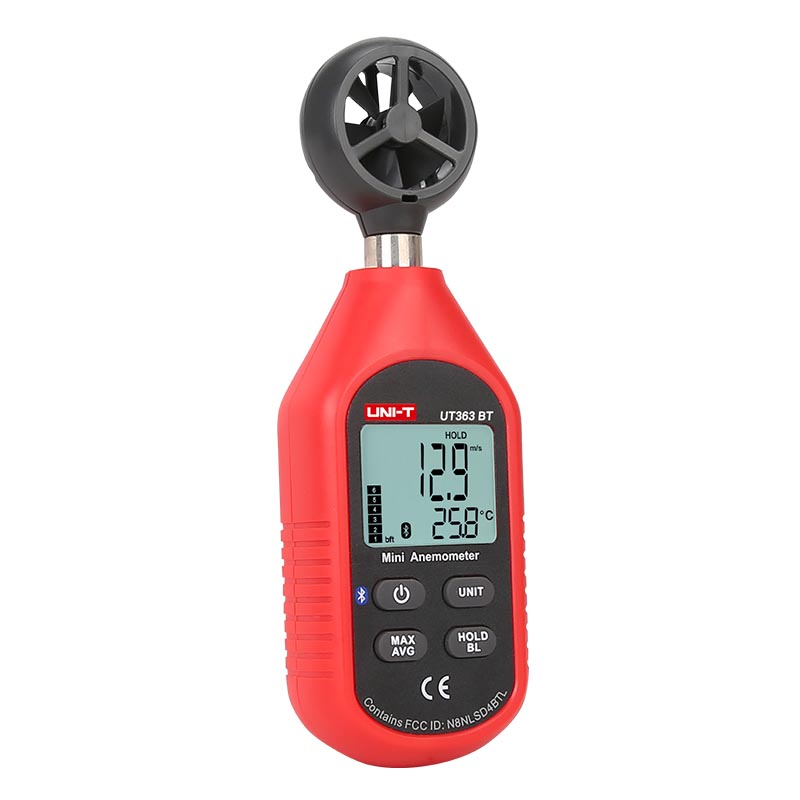Anemometers
Anemometers: Precise wind measurement for a wide range of applications
What is an anemometer?
An anemometer is a measuring device used to determine the wind speed and sometimes also the wind direction. These devices are indispensable for meteorological stations, wind turbines, aviation and many other areas where the accurate measurement of wind conditions is of great importance. Anemometers provide accurate and reliable data that is essential for weather forecasting, climatic studies and the efficient planning and execution of outdoor activities.
Different types of anemometers
Anemometers are available in various designs, each specially developed to meet the requirements of the respective areas of application. The most common types include cup anemometers, vane anemometers, ultrasonic anemometers and hot-wire anemometers. Cup anemometers, also known as rotational anemometers, measure wind speed using rotating cups. Vane anemometers use a rotor blade that is set in motion by the wind. Ultrasonic anemometers are highly precise and use sound waves to determine the wind speed. Hot wire anemometers measure the cooling rate of a heated wire in order to derive the wind speed.
Applications of anemometers
Anemometers are used in a variety of areas. In meteorology, they are essential for accurate weather forecasts and climate analysis. In aviation, they ensure safety by monitoring wind conditions on runways. Wind turbines use anemometers to measure wind speeds in order to optimize rotor blade positioning and maximize energy production. In addition, anemometers are used in shipping, agriculture, construction and outdoor activities such as sailing and hang gliding to better assess and respond to weather conditions.
Advantages of using anemometers
The use of anemometers offers numerous advantages. They make it possible to collect accurate data on wind speeds and directions, which is very important for planning and carrying out weather-related activities. By using this data, risks can be minimized and safety improved. In the wind energy industry, anemometers help to increase efficiency by helping to maximize energy yield. In agriculture, they can help optimize irrigation and crop spraying strategies to minimize crop losses and increase productivity.
What to look for when choosing an anemometer
There are several factors to consider when choosing an anemometer. First of all, you should clarify the intended use. High-precision models are required for professional use in meteorology or aviation, while simple models may be sufficient for personal use. The accuracy and measuring range of the device are also important criteria. You should also consider the weather resistance and robustness of the anemometer, especially if it is to be used in harsh outdoor conditions. Finally, ease of use can also play a role, especially for portable anemometers, which should be easy to handle and read.
Care and maintenance of an anemometer
To ensure the longevity and accuracy of an anemometer, regular care and maintenance is essential. It is important to keep the device clean and free from dirt and moisture. For mechanical anemometers, all moving parts should be checked regularly for wear and functionality. Electronic anemometers require regular checks of the batteries and sensors. Timely calibration and replacement of worn parts can maintain the precision of the device over a long period of time.
Future of anemometer technology
Anemometer technology is constantly evolving to enable even more precise and reliable measurements. Advances in sensor technology and data evaluation are leading to devices that can provide detailed analyses in real time. The integration of anemometers into intelligent networks and automated systems enables seamless data transmission and evaluation, which is particularly useful for weather forecasting and planning renewable energy sources. In the future, anemometers could even be integrated into everyday objects to provide personal weather data and increase comfort and safety in everyday life.
Summary
Anemometers are essential tools for measuring and analyzing wind speeds and directions. Their application spans numerous fields such as meteorology, aviation, wind energy and leisure activities. By choosing the right anemometer and providing regular care and maintenance, you can ensure the accuracy and longevity of your device. Ongoing technological developments in this field promise even more precise and reliable measurements in the future, which will further increase the importance and usefulness of anemometers.

